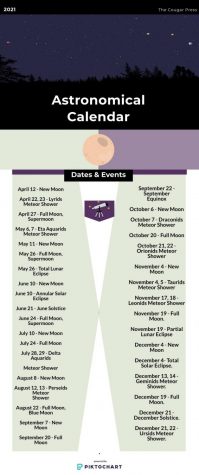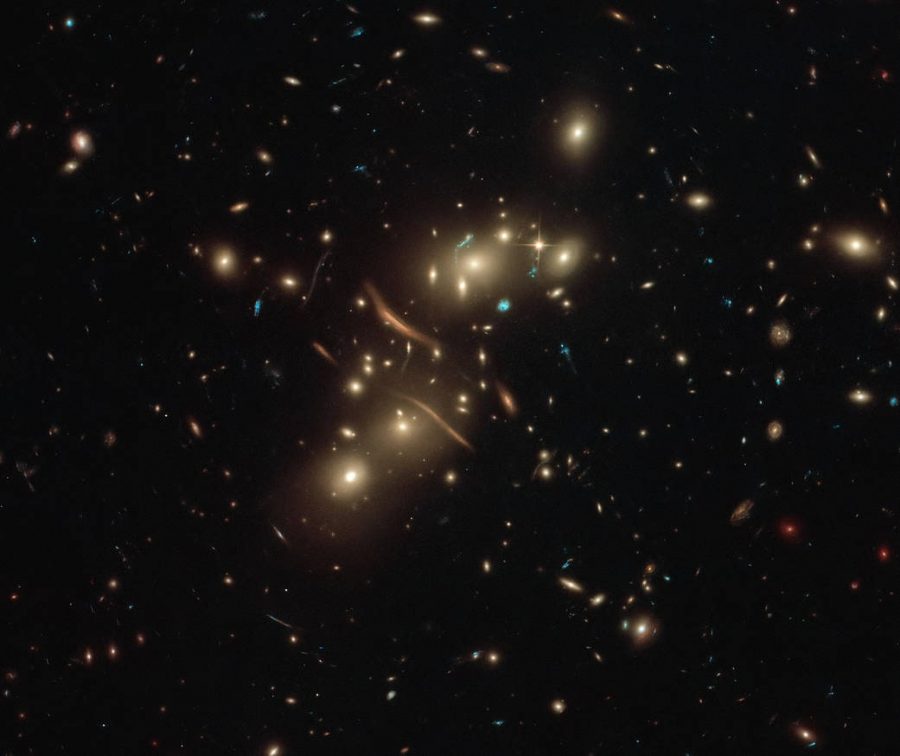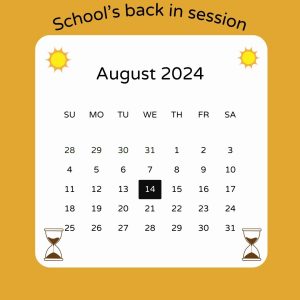Let’s take a look into the sky
Astronomy is a natural science that studies celestial objects and phenomena. Image credit: NASA & ESA
May 1, 2021
Astronomical events in 2021 and places to view them.
The sky is something any living thing gets the pleasure to view and take in its beauty. While in 2021, there are many extravagant sights to see including 10 full moons (three being super moons and one being a blue moon), 10 meteor showers, four eclipses, a solstice and an equinox.
An important astronomical event that has already happened but still has more to follow it, Mercury was and will be in complete retrograde movements during the following date ranges: Jan. 30 to Feb. 21, May 29 to June 22, Sep. 27 to Oct. 23. If you are unsure what that means, it is when Mercury looks as if the planet is moving backwards from our view here on Earth. During this time, people tend to feel lethargic, scattered energy that feels restless, unfocused and anxious. With everything moving in reverse, many are left feeling extra nostalgic for things from our pasts. So this is a reminder and sign to not contact that ex-partner.
With there still being so much left of space to be explored, sophomore Jaden Elizondo expressed “I’ve always thought that space was interesting and wondered what was out there.”
Continuing on, there shall be 10 full moons. Though on April 27, May 26 and June 24, the moons will all be supermoon’s. A supermoon is when the moon appears to be larger than it normally does. On April 27 it will be a pink supermoon and on Aug. 22 it will be a full and blue moon.
While some may want to view these beautiful moons, here are some suggestions; the Poinsettia Pavilion has a big parking lot in which you can park in and take a look at the moon. There’s also of course the beach, any beach will do as long as you are in the right spot. Sophomore Ava Elliott said, “I am looking forward to the pink moon and I think there are some meteor showers coming in the next couple months and I think those will be super cool to watch.”
Throughout the next couple months, there will be plenty of meteor showers to catch. On April 22 and 23, the Lyrids Meteor shower will occur which usually produces about 20 meteors per hour at its peak. Then on May 6 and 7, the Eta Aquarids Meteor Shower happens in which it is an above average shower, capable of producing up to 60 meteors per hour at its peak. On July 28 and 29, Delta Aquarids Meteor Shower occurs which is just another average meteor shower.

One of the best meteor showers to go see is on Aug. 12 and 13 called the Perseids Meteor Shower. It produces up to 60 meteors per hour at its peak. It was created by comet Swift-Tuttle, which was discovered in 1862. The Perseids are famous for producing a large number of bright meteors.
Following that, there are two meteor showers in Oct., the Draconids Meteor Shower on Oct. 7 and the Orionids Meteor Shower occuring on Oct. 21 and 22. Once again in November there will be two meteor showers; November 4 and 5 the Taurids Meteor Shower and then on Nov. 17 and 18 the Leonids Meteor Shower will happen. Then finishing with December, on Dec. 13 and 14 the Geminids Meteor Shower and then on Dec. 21 and 22 the Ursids Meteor Shower occurs.
This year is jam packed with many astronomical events including eclipses. Starting off in May, on May 26 the Total Lunar Eclipse will take place. During this type of eclipse, the moon will gradually get darker and then take on a rusty or blood red color. In the following month on June 10, the Annular Solar Eclipse will take place which results in a ring of light around the darkened moon. Then five months later there will be a Partial Lunar Eclipse on Nov. 19. Finally, on Dec. 4 there will be one last Total Solar Eclipse.
Lastly, there will be the June Solstice (summer solstice) on June 21. This is the first day of summer, hence it being known as the summer solstice, in the Northern Hemisphere and then it is also the first day of winter (winter solstice) in the Southern Hemisphere. Following the solstice three months later on Sep. 22, the September Equinox will take place. The sun will shine directly on the equator and there will be nearly equal amounts of day and night throughout the world which also represents the first day of fall in the Northern Hemisphere.
Another suggestion on where to catch these events is your own backyard. Eliott also said, “ I love watching the stars from my backyard. I live up in oak view so there aren’t as many city lights as Ventura so you can see the stars so much clearer. I usually just lay out on the grass at night and try to see shooting stars with my mom.”
With the chaos of daily life, taking a break to catch these beautiful things can be a nice break for all. All you would need is a place outside with little light, maybe some blankets and some family or friends to watch any of these events.










